 RYAN MATTHEWS
.
June 22, 2022
.
All Feature Vehicles
RYAN MATTHEWS
.
June 22, 2022
.
All Feature Vehicles
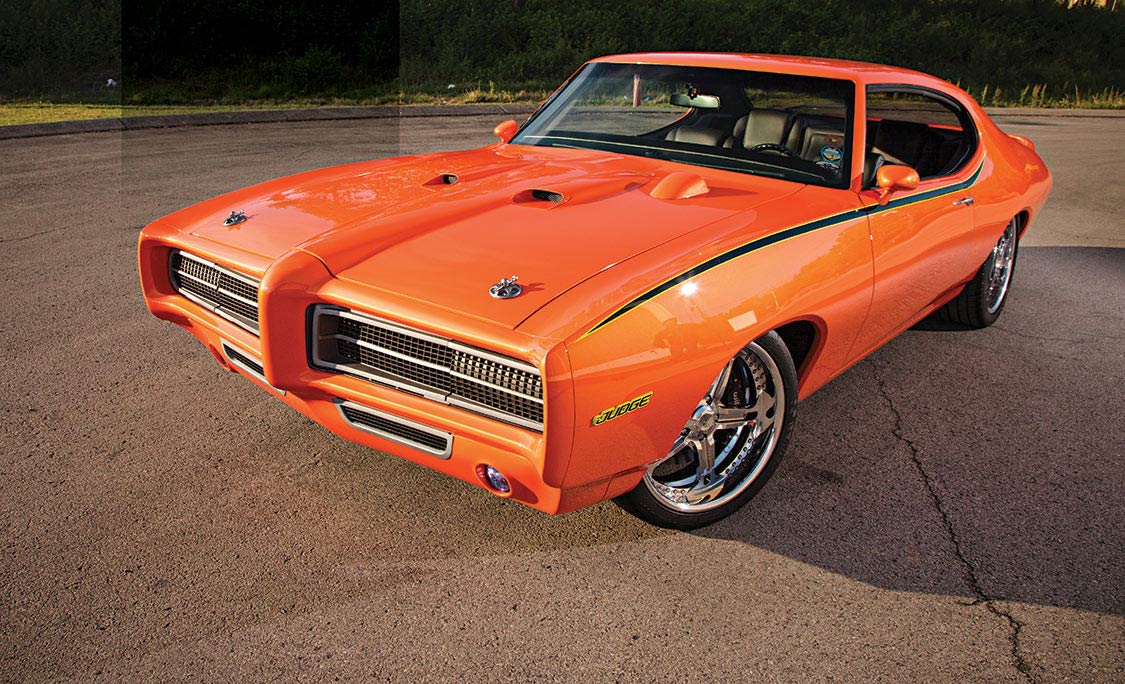
During the build or restoration of any car, there are a few big decisions and millions of smaller ones. Usually the major issues become the easiest to make as in which car, what color to paint it, which engine to build, etc. It’s the multitude of little dilemmas that often cause the greatest angst. These smaller quandaries often mean the difference between a nice car and an awesome build. For Tom Farnsworth of Pinedale, Wyoming, the act of standing in judgment of his own instincts is what made his ’69 Pontiac GTO Judge the crowd-pleaser it is.
Tom was first exposed to Pontiac’s marketing genius in the spring of 1969. By that time the GTO was already one of the staples of the muscle car scene. The new A-body debuted in 1968 with a shorter wheelbase shared with the Chevelle and 442; however, the GTO was the only A-body with the new Endura color-matched front bumper. This made it look even better and further established the model as the biggest influencer in its class.
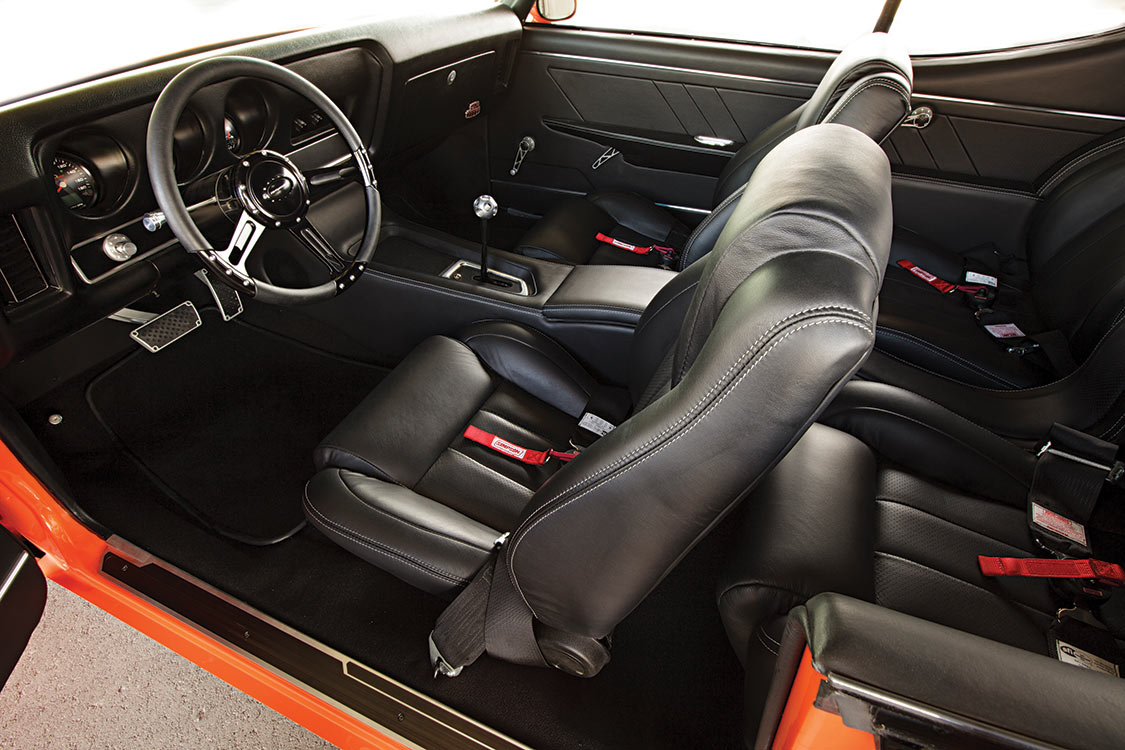
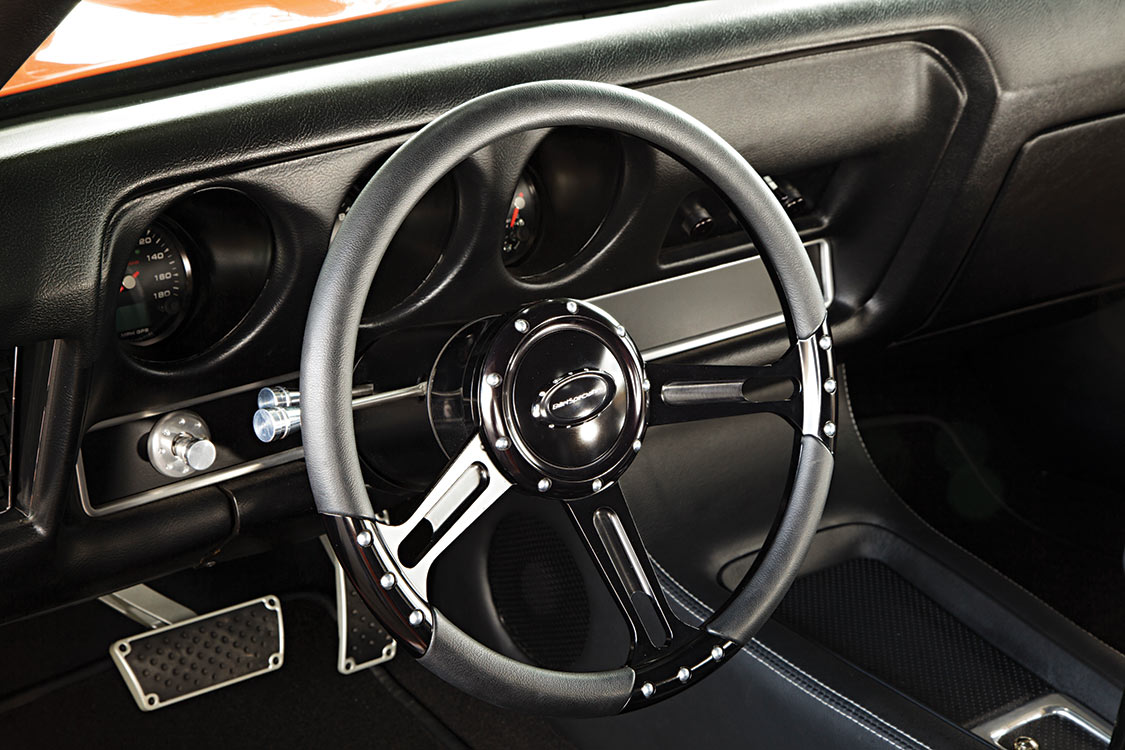
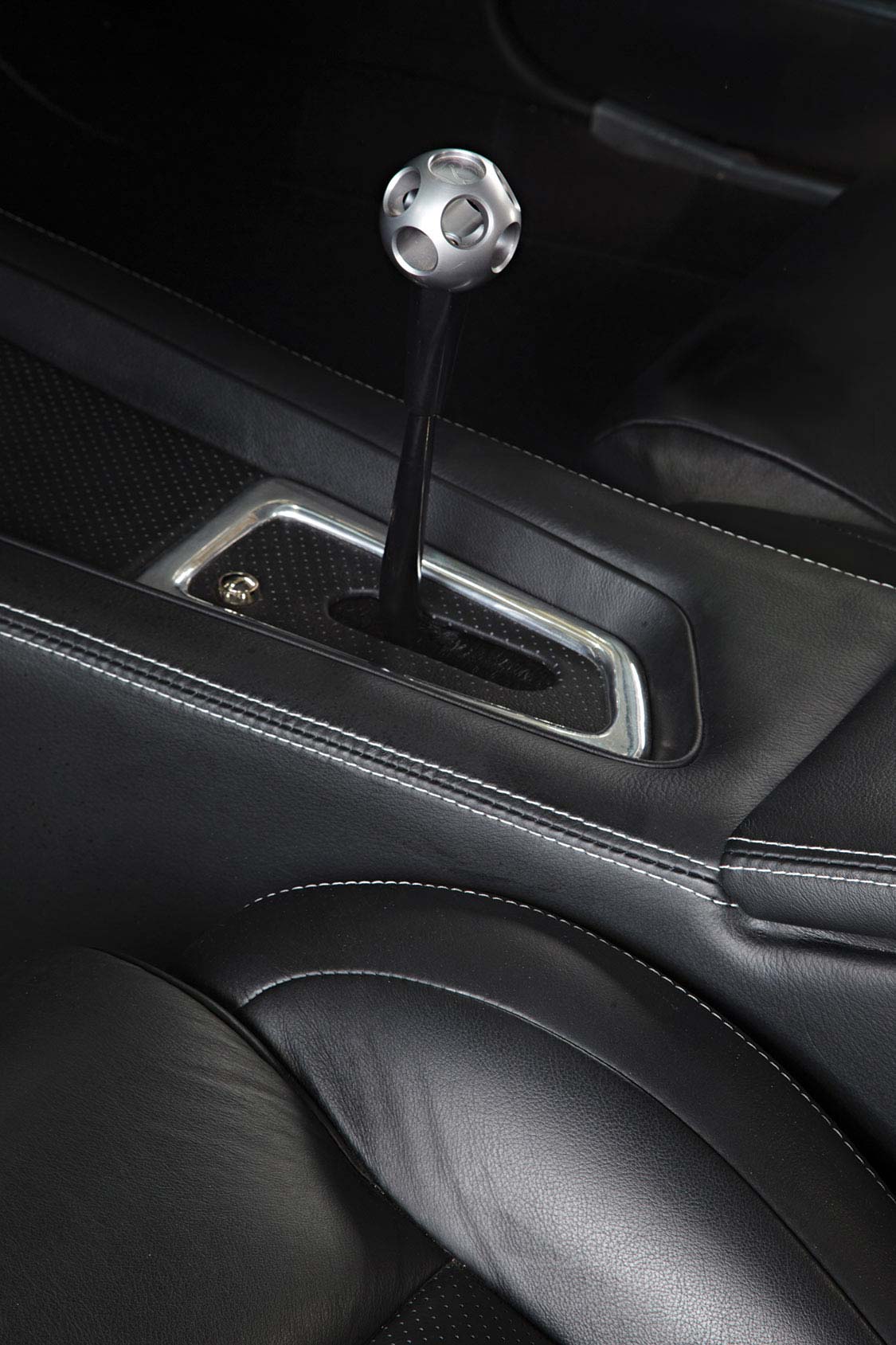
During the ’60s, each division of General Motors had its own distinct personality. Cadillac was the aspirational upper crust. Buick was the refined, conservative brand. Oldsmobile was looked upon as unique and innovative. Chevrolet was all about youthful appeal and blue-collar work ethic. Pontiac was the wild and creative one, and nothing confirmed this more than the release of the GTO Judge.
The Judge was an over-the-top variant believed to be inspired by Flip Wilson’s character on the hit NBC variety comedy show “Laugh In.” As a boy living in New Castle, Wyoming, Tom first saw a Judge via a friend’s older brother. “I was 13 when I saw this bright orange GTO. It was amazing with the fender licks, hood-mounted tach, rear wing and the word ‘Judge’ on the nose of each front fender. It was the coolest car I’d ever seen,” Tom said. The image of the Judge stuck with him for the next 30 years. During that time he owned many muscle cars, but there was always an open parking space waiting for a Judge.
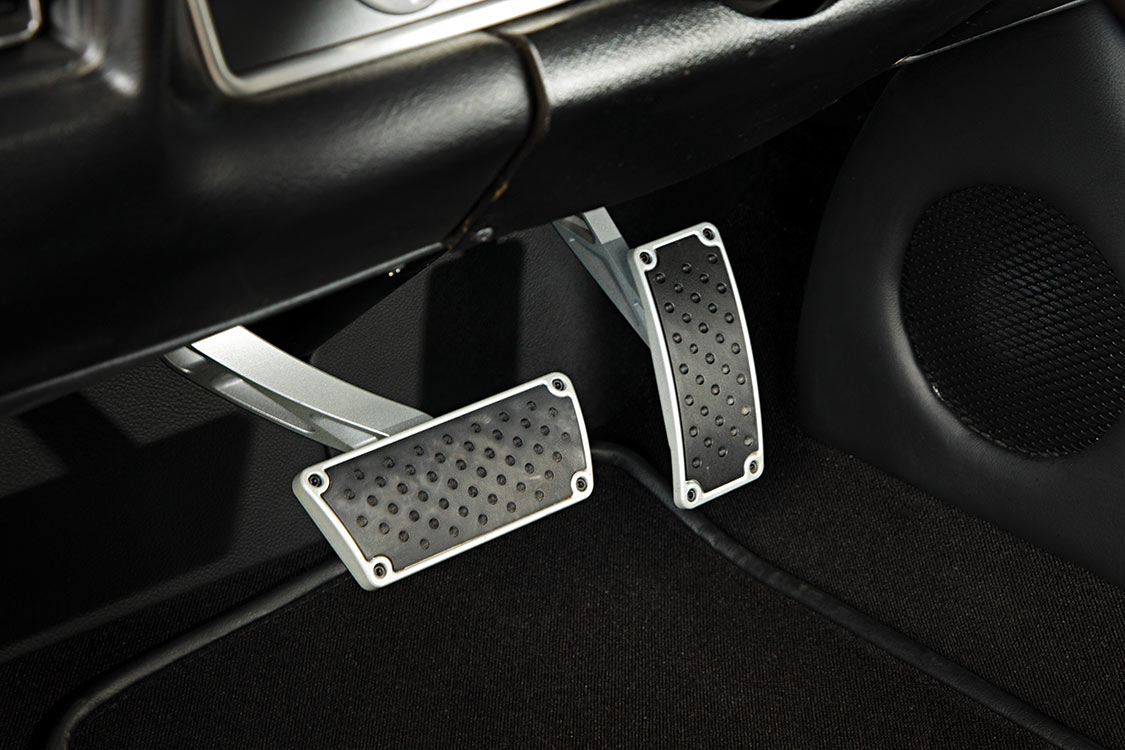
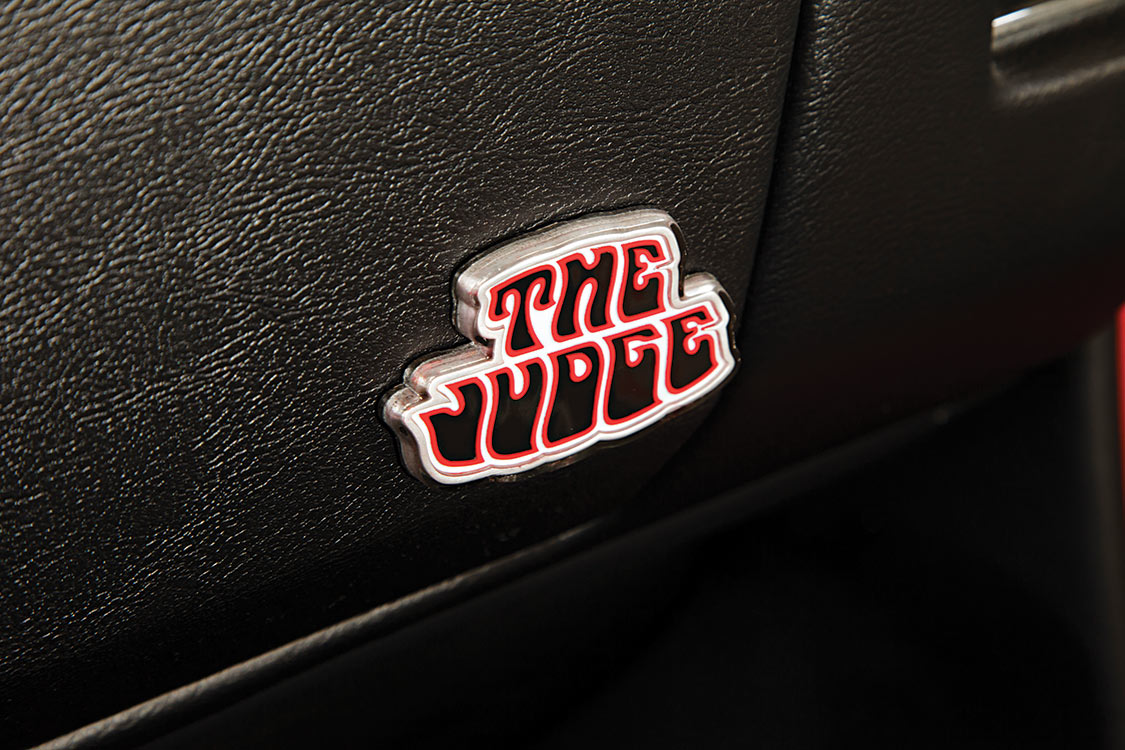
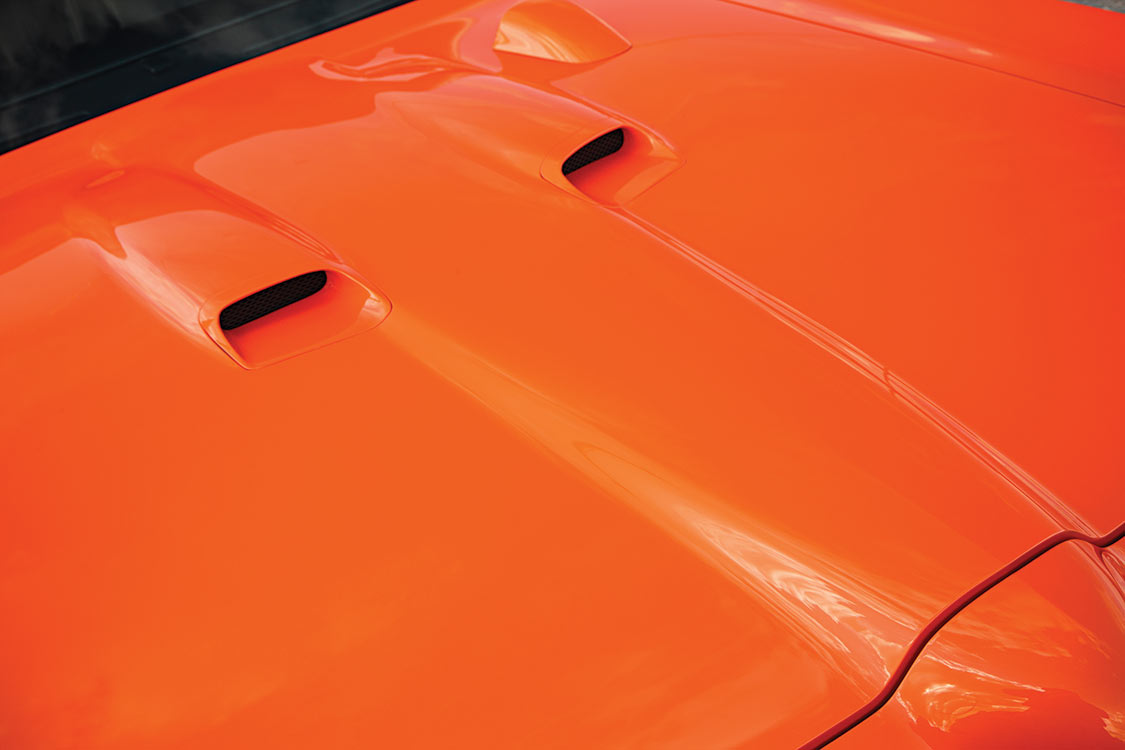
“Thank goodness for eBay,” Tom proclaimed. Twelve years ago, while browsing the online auction site, he came across a ’69 GTO Judge. There it was, a slightly modified version in the famous bright orange (actually called Carousel Red). After reading the full description, he learned that it was not an original Judge, but a GTO Judge tribute car. At first he was slightly disappointed, but after further consideration, Tom assessed the possibilities and opportunities. Here was a chance to build a better, personalized Judge without destroying one of the 6,725 that came off the Pontiac assembly line. He also realized the entry level price would be far less than starting with an actual Judge. He was right about one of those thoughts.
The long distance purchase was made, and the car was shipped from Phoenix to Pinedale, Wyoming, a town whose motto is “All the Civilization You Need.” If you’re a car guy, then Tom’s garage is where civilization begins in the western part of the state, and life was about to get quite a bit wilder.
A more radical modification was performed on the rearend of the Judge. The old, bulky chrome bumper was cut into pieces and reworked before being stripped, primed and painted. The lower valance was fitted with rectangular exhaust ports.
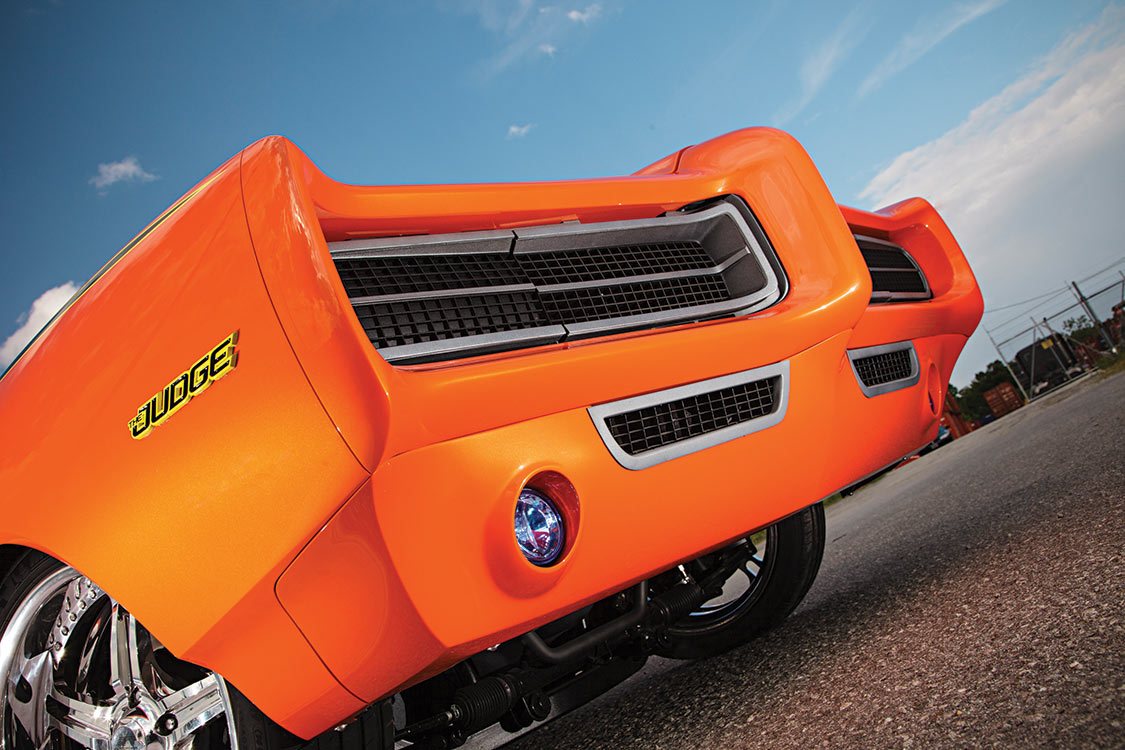
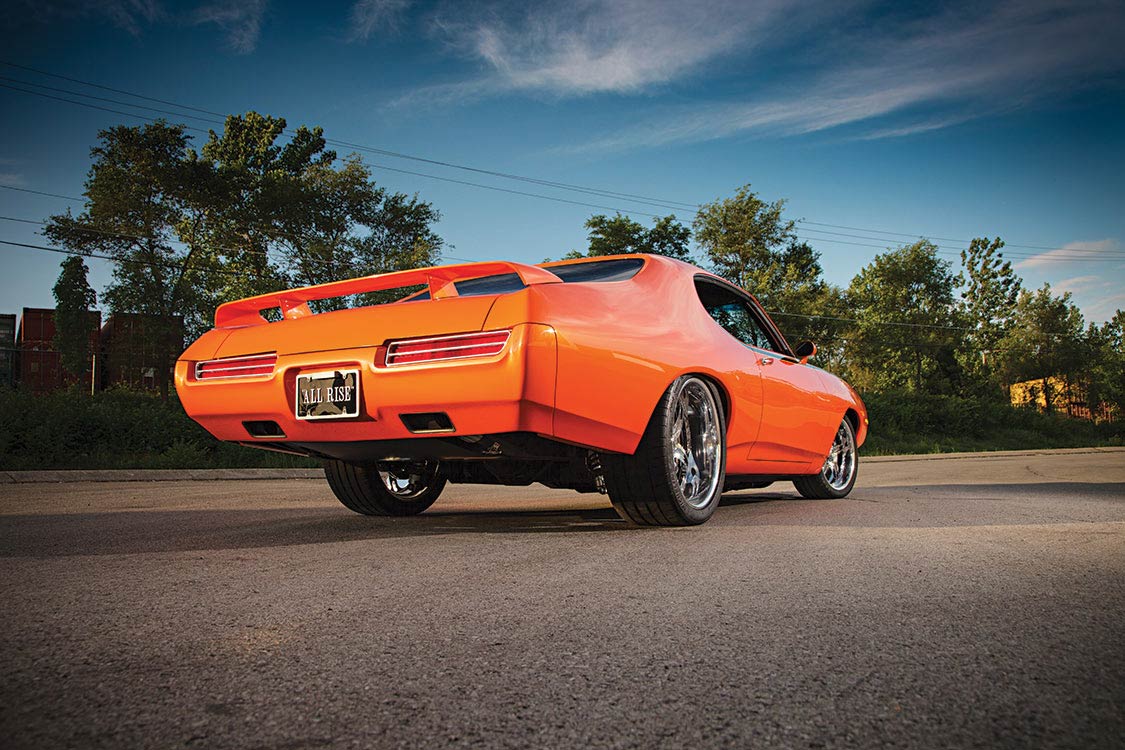
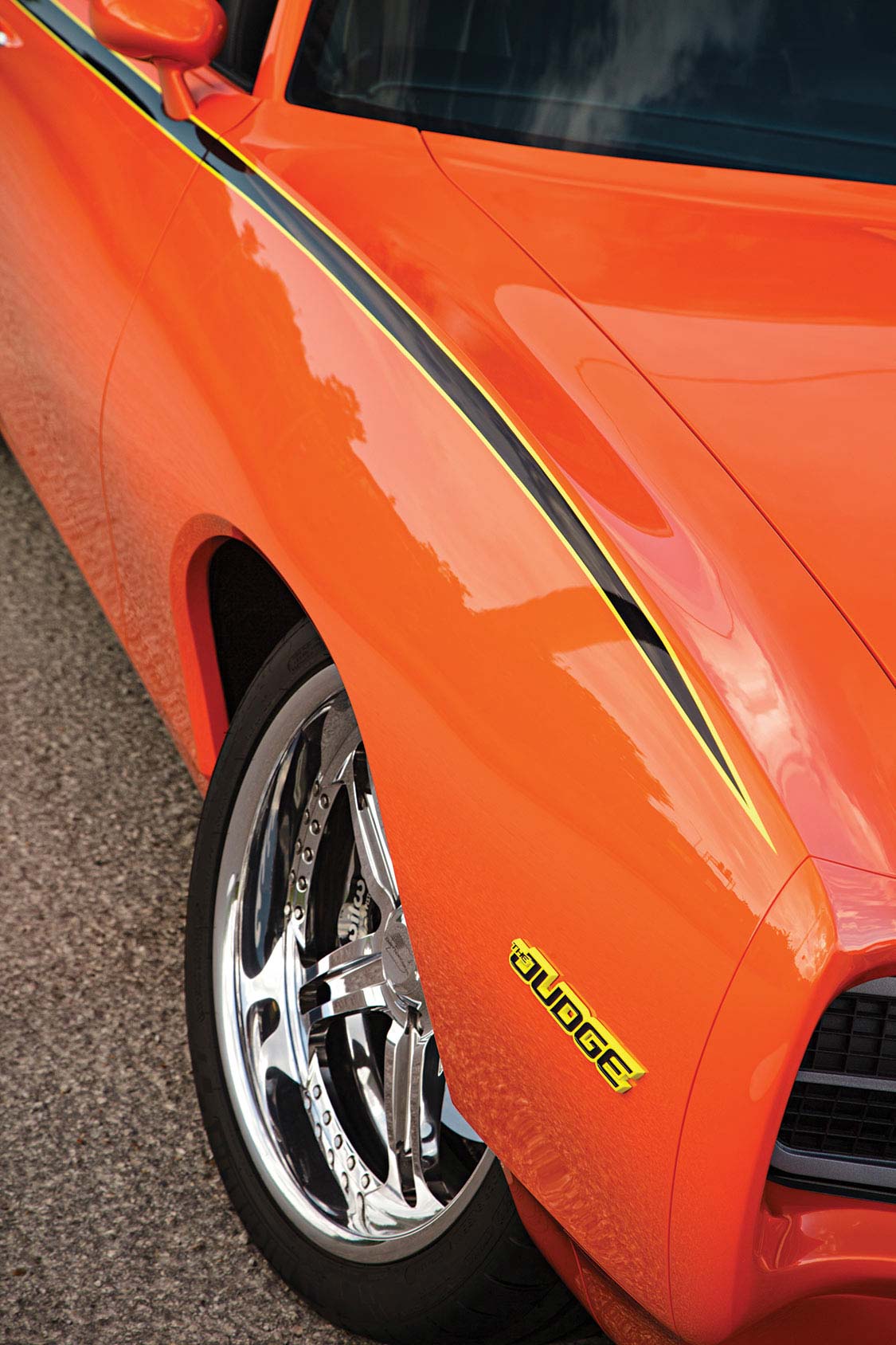
The Judge was a driver for a short while before major changes took place. The first step was a full-tilt Butler 468-cid engine built by Pat Monan at Southside Service in Deadwood, Wyoming—yes, that Deadwood. A tricked-out GM 700R4 tranny was added to handle the 650-hp. “Once the engine was in, it didn’t take long to convince myself that too much is never enough,” Tom admitted. There was only one way to go, full out.
Tom had trusted G3 Rods of Rapid City, South Dakota with several other projects, so turning the Judge over to Ryan Gruba and his brothers was natural. According to Tom, there was a rather unique beginning to the project. “When it was sent to G3, I had just put a new set of BFGs on it. Shortly after it arrived at their shop, I was sent a video of the Judge doing a smoky burnout. When I went to check on the progress of the build a few months later, the front tires still had the stickers on them. The backs, however, were toast. I gave them the okay to give the 468 engine a test, so it was all on me. In good fun, though, I still kid them that they owe me a set of tires.”
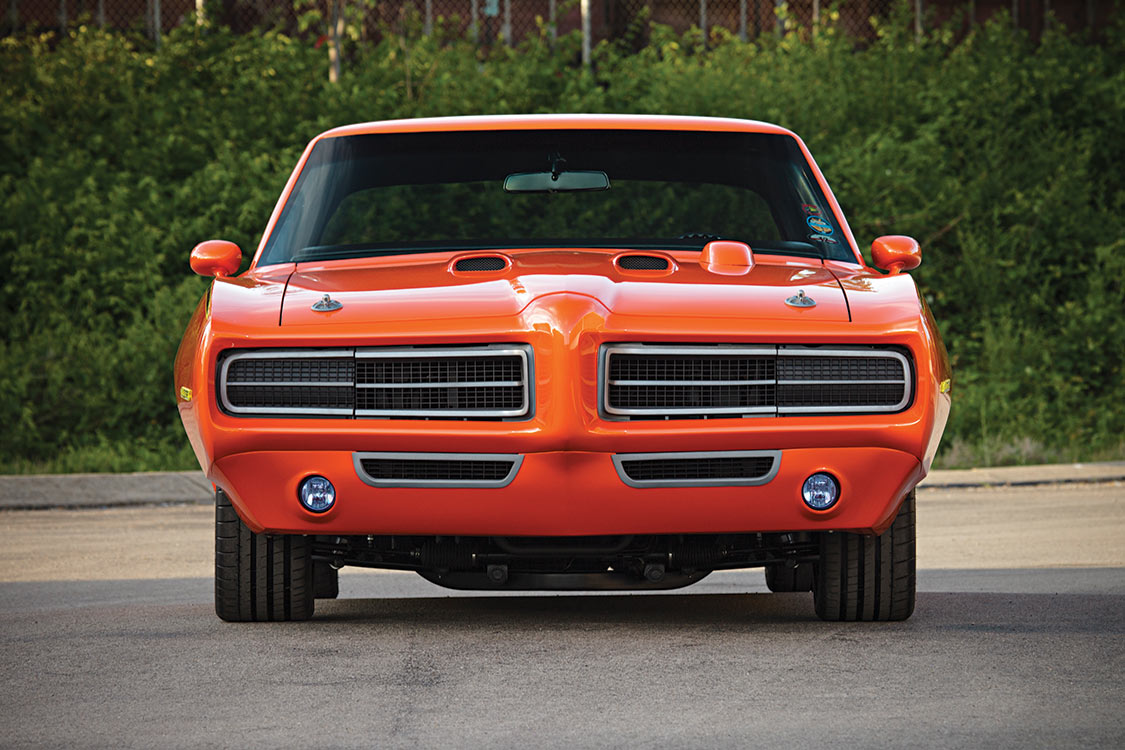
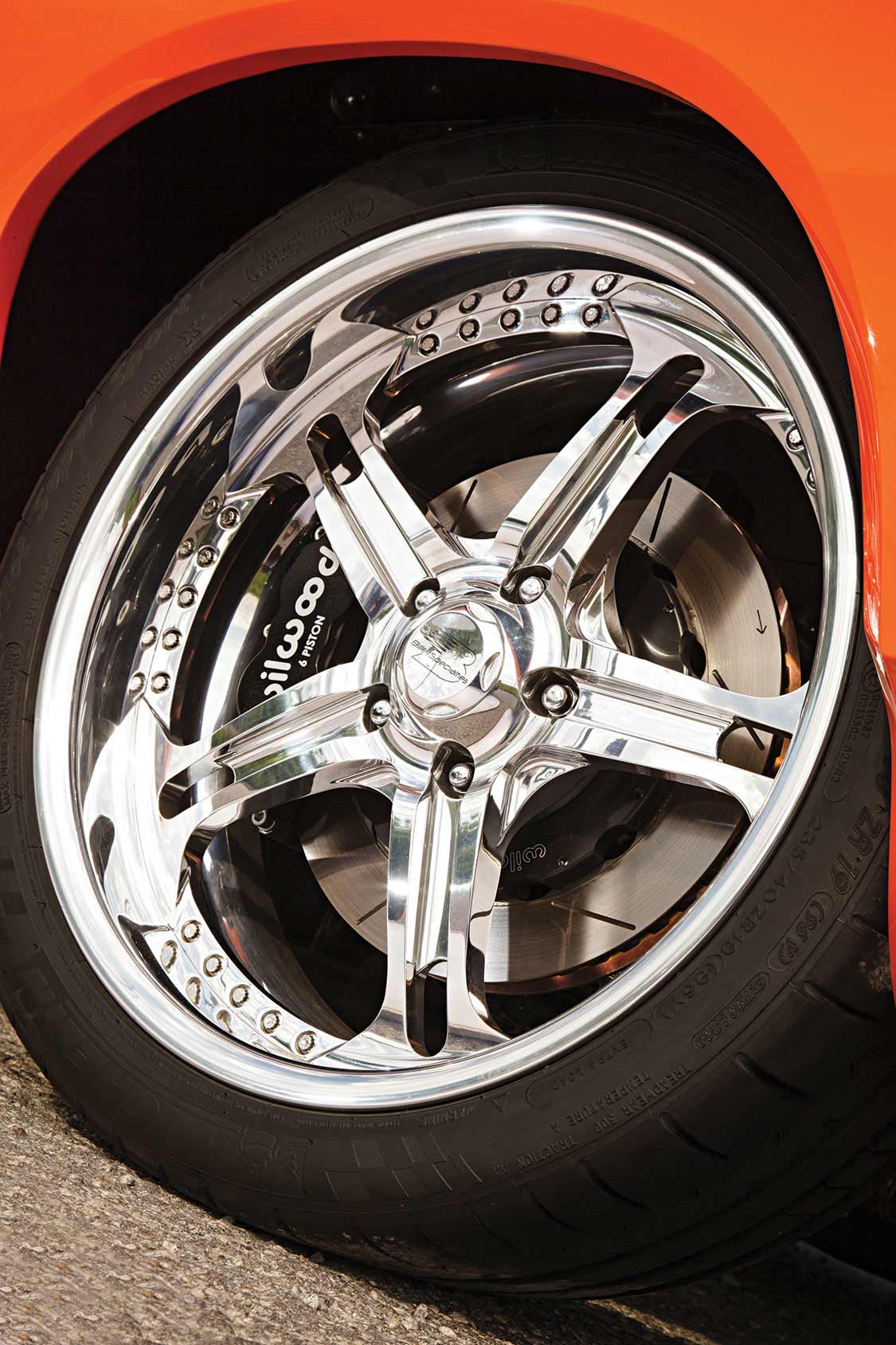
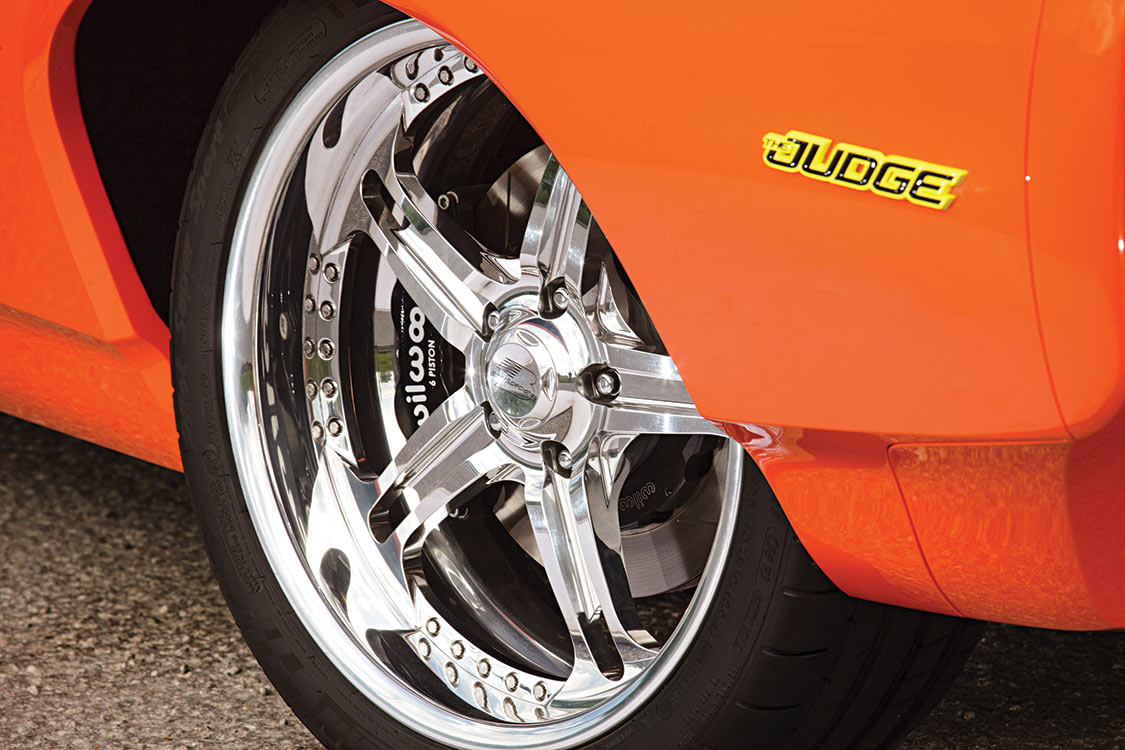
The plan was to execute a number of subtle changes to the classic Pontiac A-body design. These included flush-mounted glass and a slight change to the arch of the rear window. More radical modifications included reforming the tail section. The massive factory chrome bumper was cut into multiple pieces, reassembled, then stripped, primed and painted. It was blended with a section that integrates into the bodyline as it dives toward the ground. The taillights were also custom crafted to better contour into the overall shape of the car. The signature rear deck wing remains to keep the look familiar, yet different.
If it worked for the rear, it’ll work for the nose. The Endura front bumper was removed and replaced with a steel bumper from a 1968 Le Mans. Like the rear bumper, the front unit was sliced and diced until the fit was perfect. It was acid dripped and stripped, primed and painted to match the body color. A new lower valance was formed with round running light ports and special air ducts. The work was so well planned and executed you would think it was performed by one of the old masters of customizing like Carl Casper, Gene Winfield or Darryl Starbird.
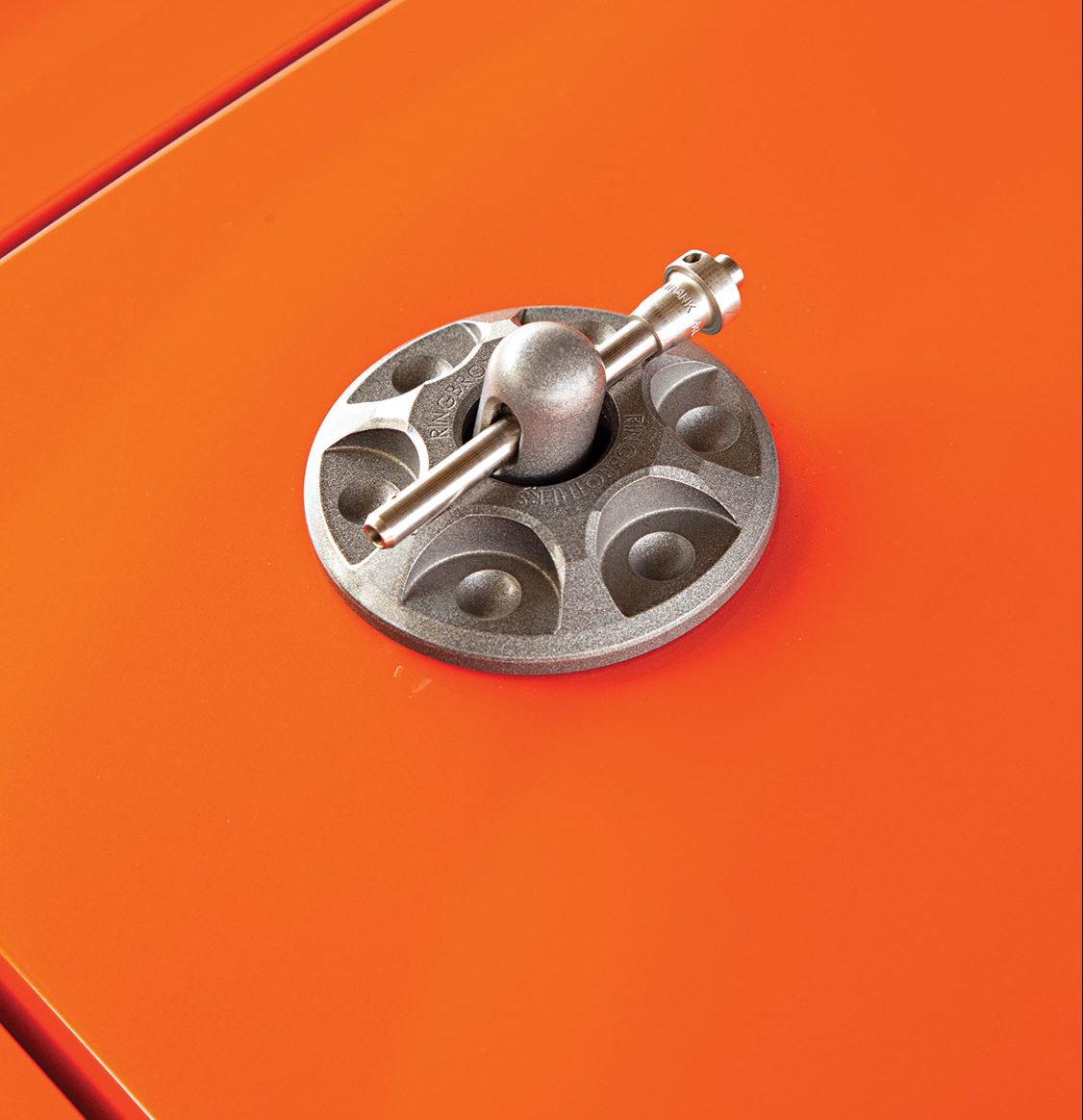
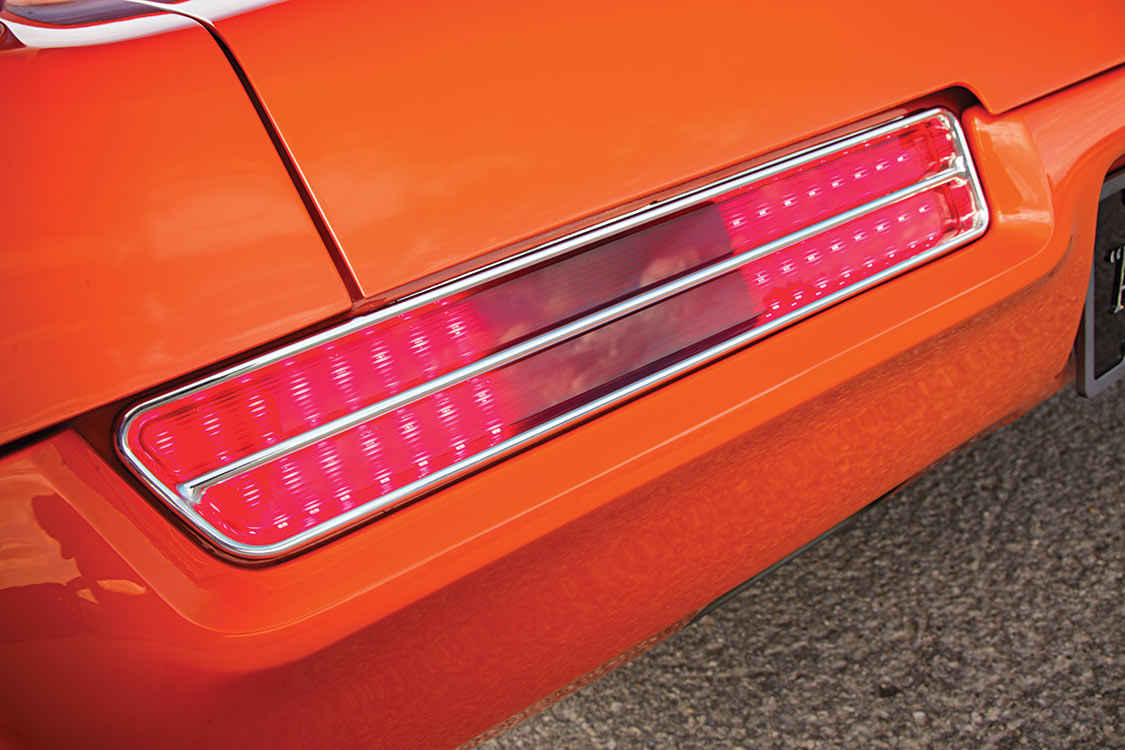
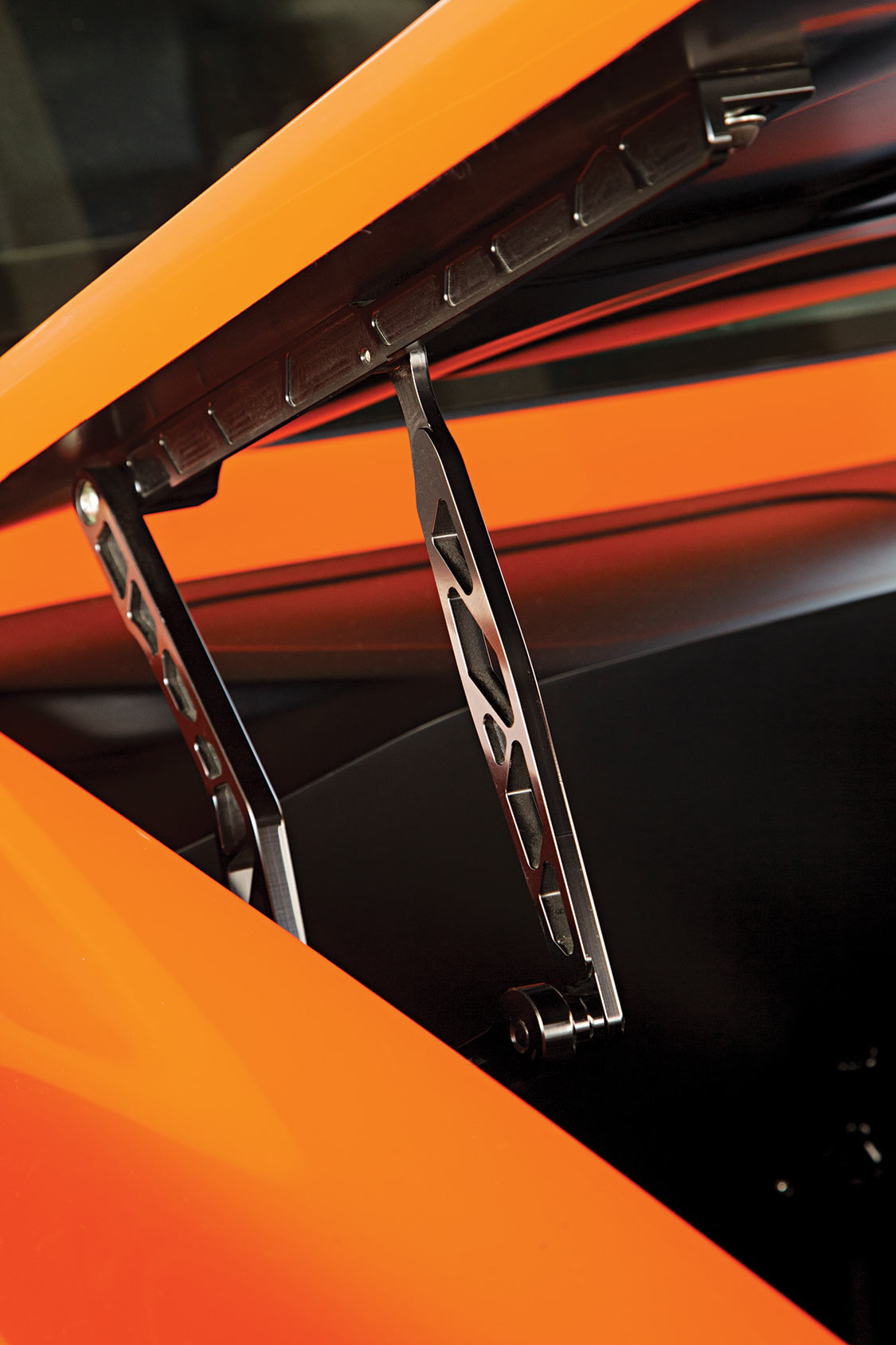
One item that was on the chopping block was the original hood-mounted tachometer. “I said, ‘No way, that’s got to stay’ and kept to my guns.” Tom said. In the end, all agreed that the customer is always right, especially in this instance.
As healthy as the big engine was, G3 gave it a makeover with a full menu of new performance and cosmetic components, including a Billet Specialties Serpentine system, Doug’s headers and Lokar cables. The tranny was swapped out for a Gearstar 200R4. Suspension improvements were performed using an Art Morrison GT Sport chassis, Wilwood braking system and a Strange-built Ford 9-inch rearend. Progressive rate coil-over springs replaced the old blacksmith leafs. Finally, Billet Specialties wheels were selected in a modern version of “bigs and little” with 18×9 front and 20×10 in back with appropriate Michelin Pilot Sport rubber. It was designed to nicely tuck in the mini-tubs of the narrowed rearend.
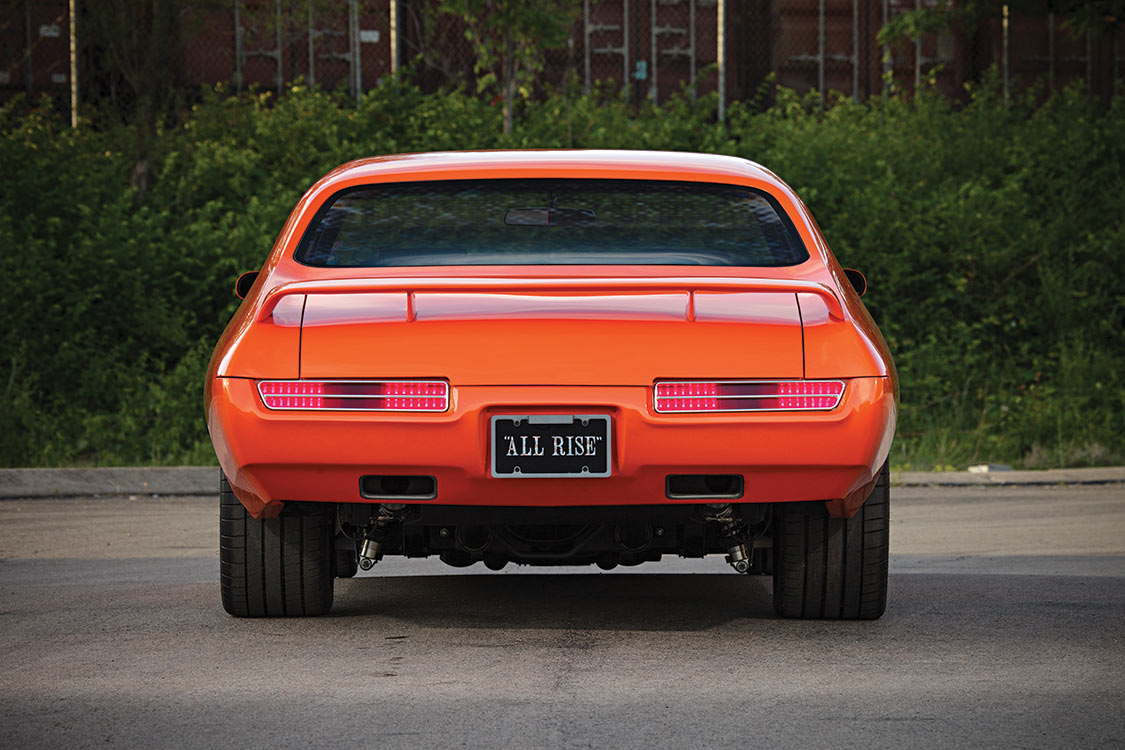
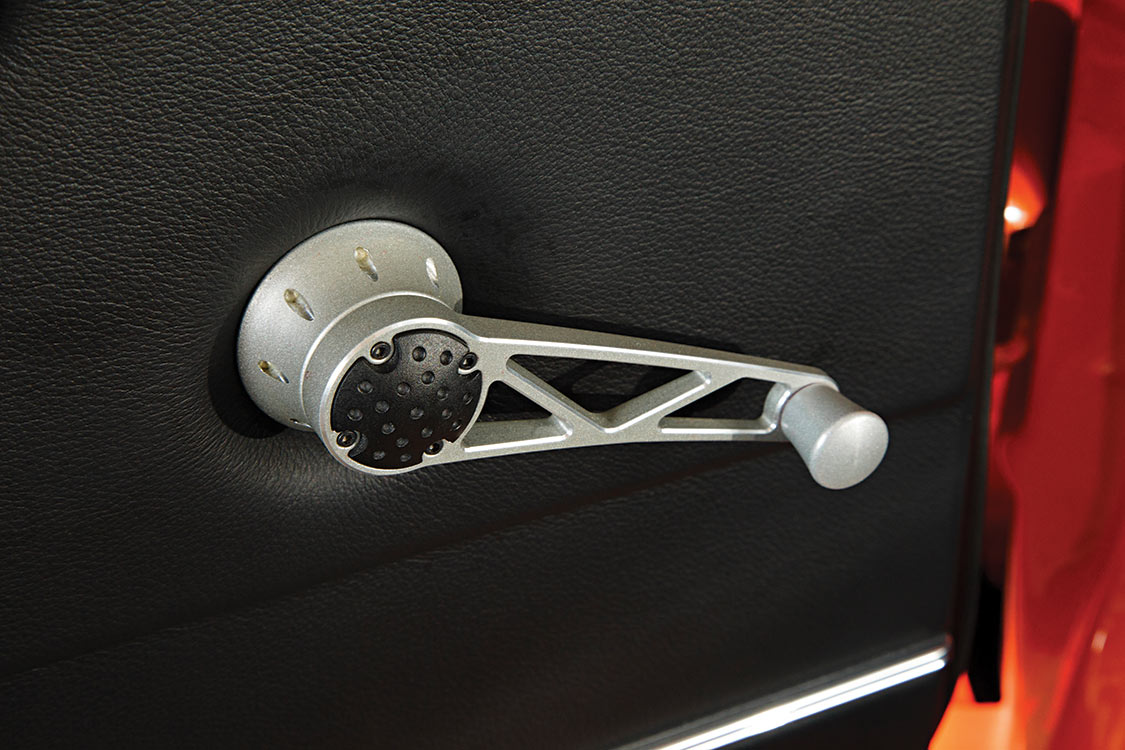
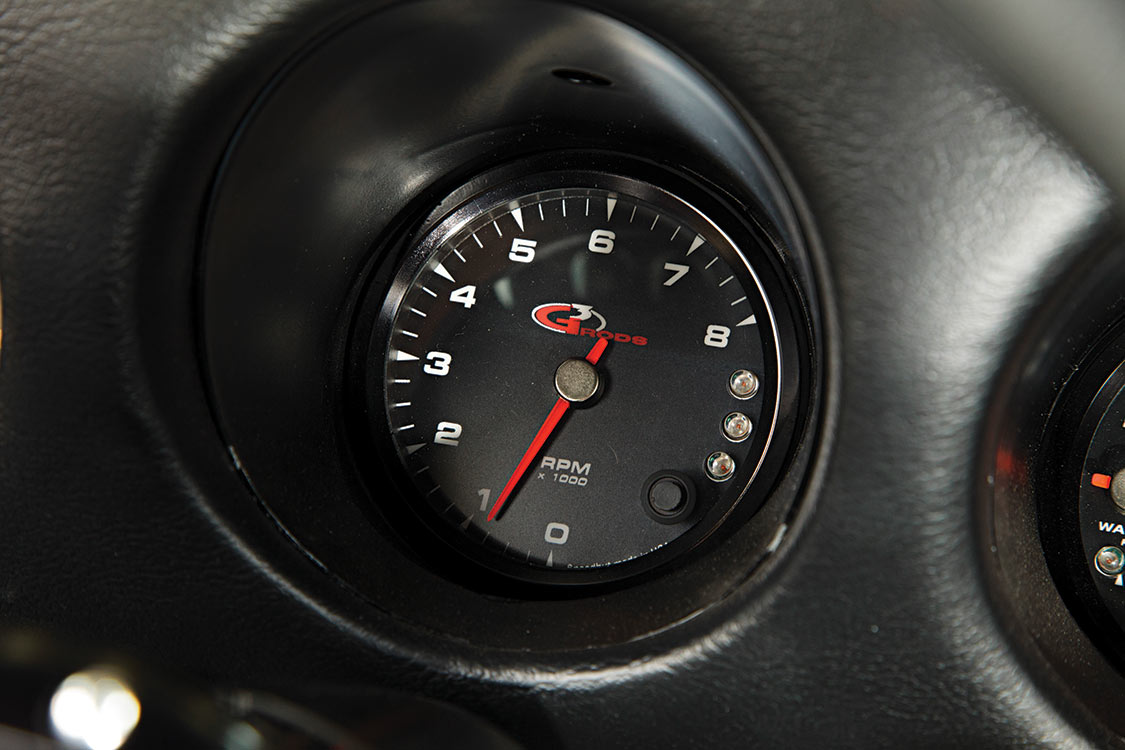
There was plenty of regular bodywork to perform, and then the G3 crew took to doing things to the extreme. Once the car was down to metal, issues arose. This was not unexpected. After all, we’re talking about a General Motors car built in the late-’60s. Original panels don’t last forever and new rocker panels, door skins and a roof panel were graphed in. Perfection, or as close as humanly possible, was the goal. It took a great deal of time to achieve precise body fit with consistent door, trunk and hood gaps.
When the body was straight and the fit tight, Glasurit primer was applied, sanded and applied again. The two-stage Carousel Red was sprayed and covered in clear. When the body was color-sanded and buffed, the results were stunning.
All this time, the interior panels and seats were being crafted at Weber Interiors in Minneapolis. The rich black leather with gray stitching covered the ProCar bucket seats, custom center console, kick panels and rear seat. Weber also worked its magic on the Billet Specialties steering wheel.
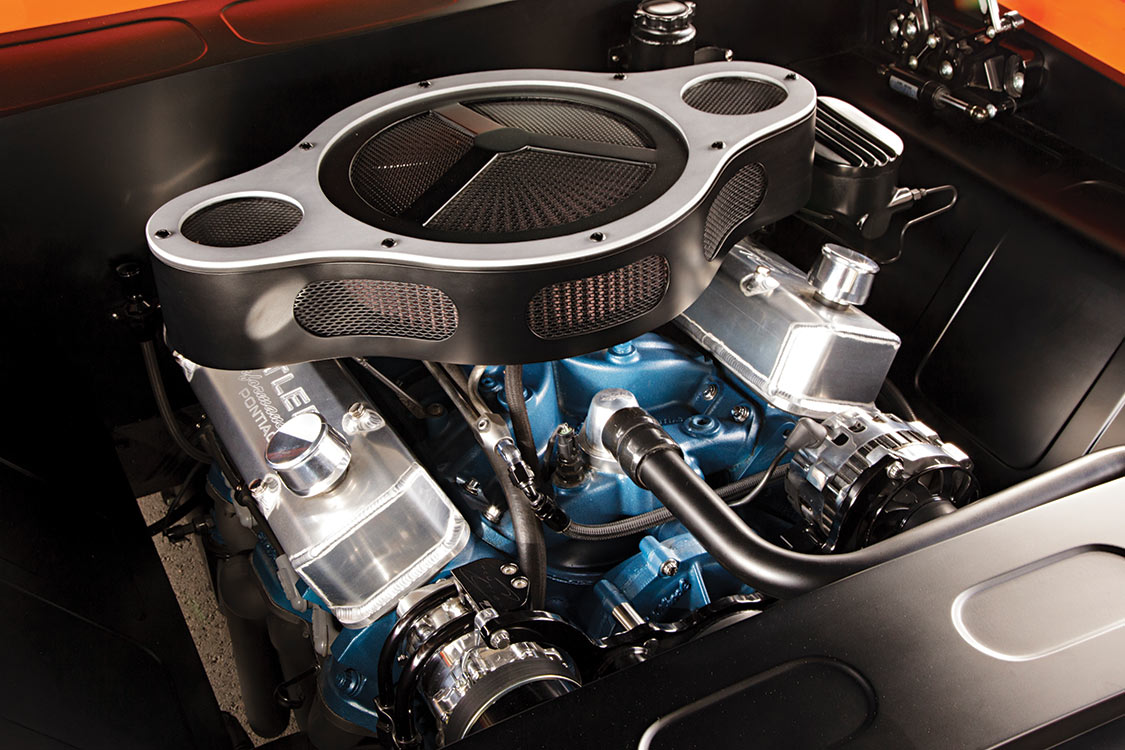
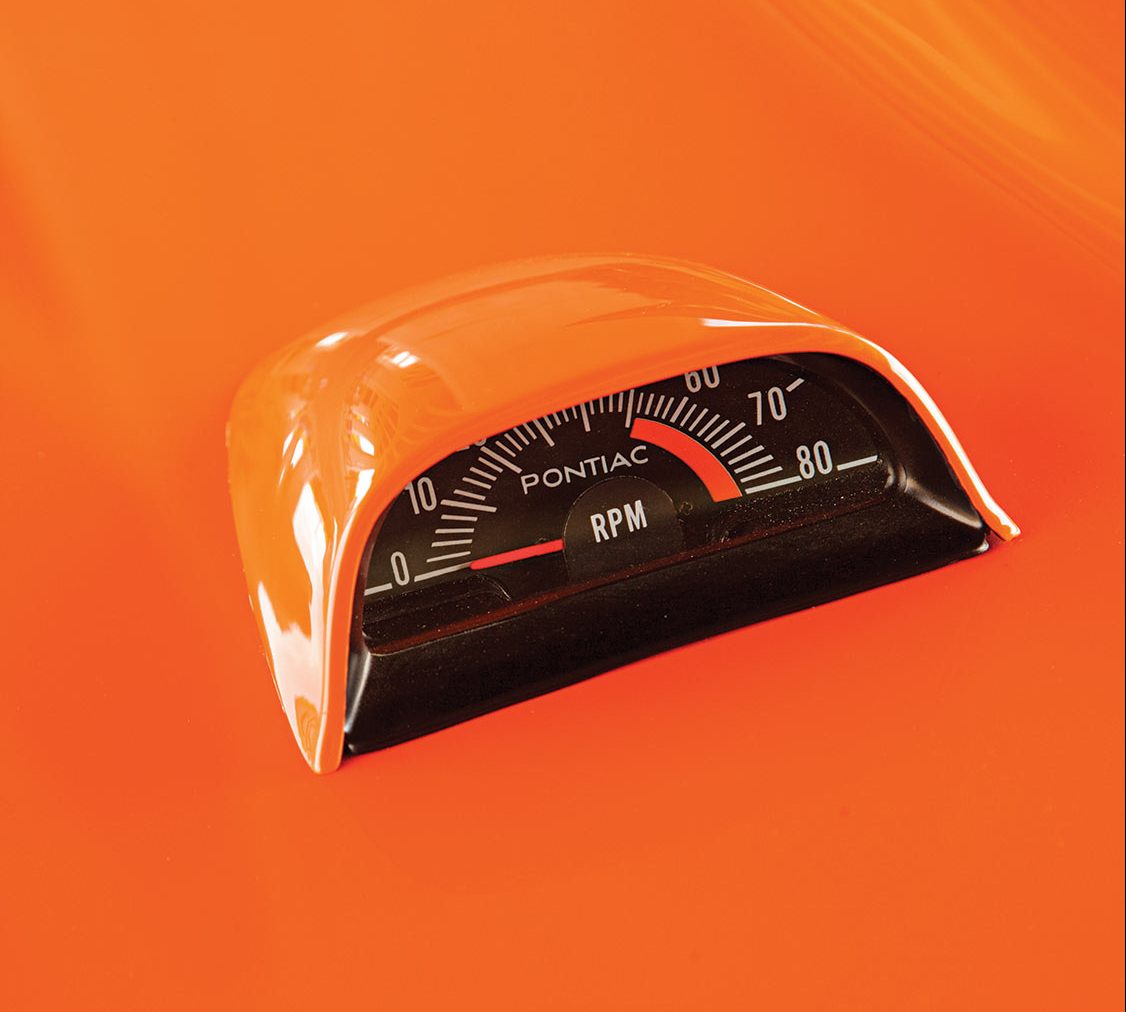
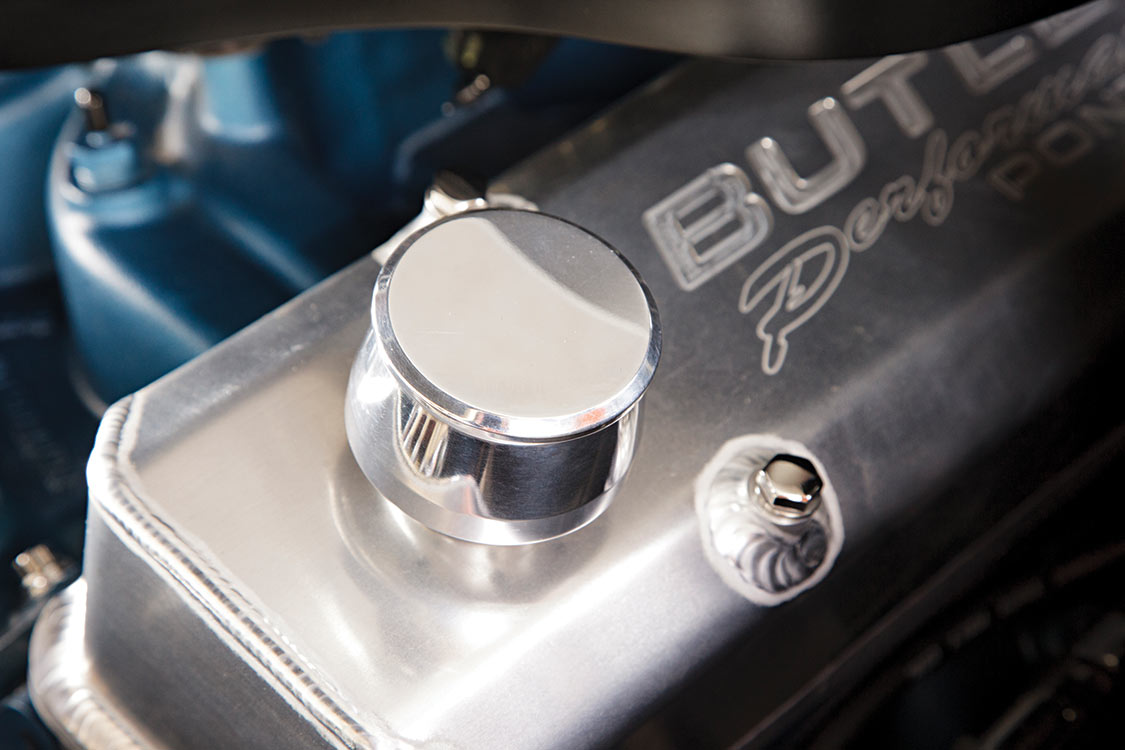
G3 hid all of the audio components in strategic trunk compartments. Weber then matched the look of the interior with custom panels and carpeting. When all of the interior pieces were completed, G3 laid down a foundation of Dynamat before performing a white glove installation and finished off the cabin with Speed Hut gauges, Lokar shifter, Bowler shift handle, Clayton pedals and door handles.
G3 delivered the custom Judge back to Tom two years ago. Since that time it has seen action at events from Reno to Oklahoma City. Tom insists the pristine Goat is a driver. That makes sense since Pinedale (population 2,100) isn’t exactly what anyone would call a hotbed of automotive activity.
The car’s aura attracts a great deal of attention no matter where Tom takes it. “It just seems to draw people in. Maybe it’s the color, or the details, or the overall execution, but it does create a crowd,” Tom admitted. Getting noticed is what the Judge was all about when it was introduced in 1969. Tom’s ride proves the lasting allure the GTO Judge was designed to achieve. His version, tribute or not, may be the country’s prime example of the essence and influence Pontiac once had on the American automotive market.
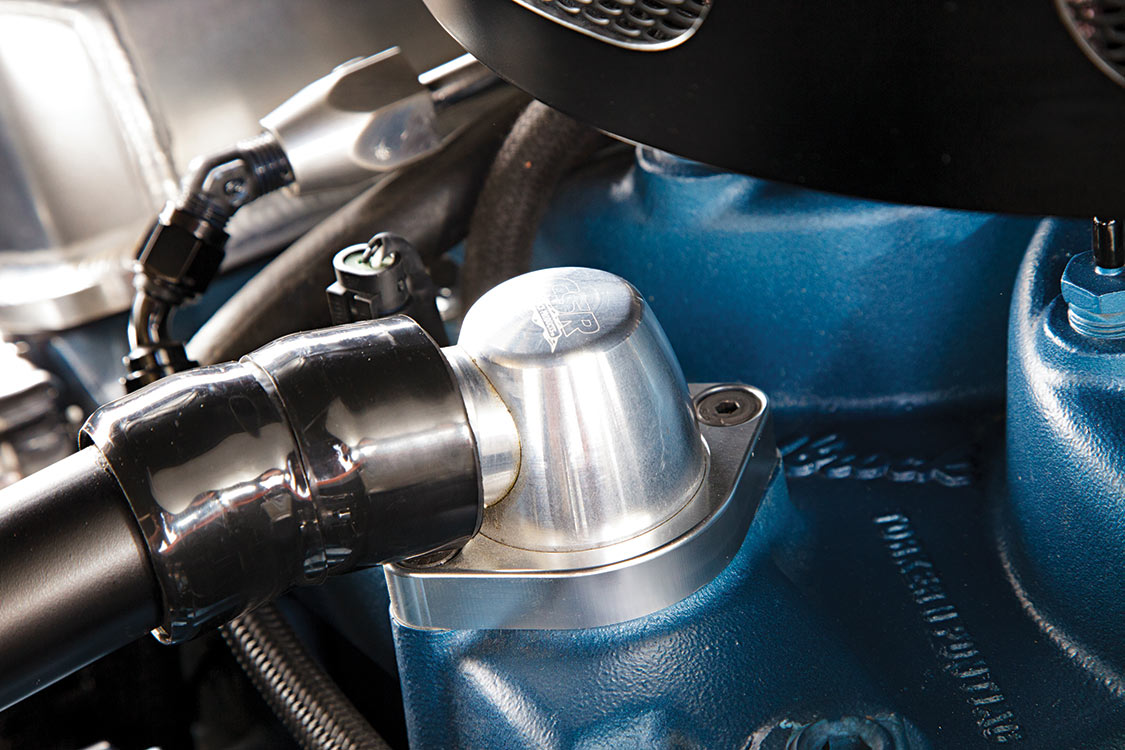
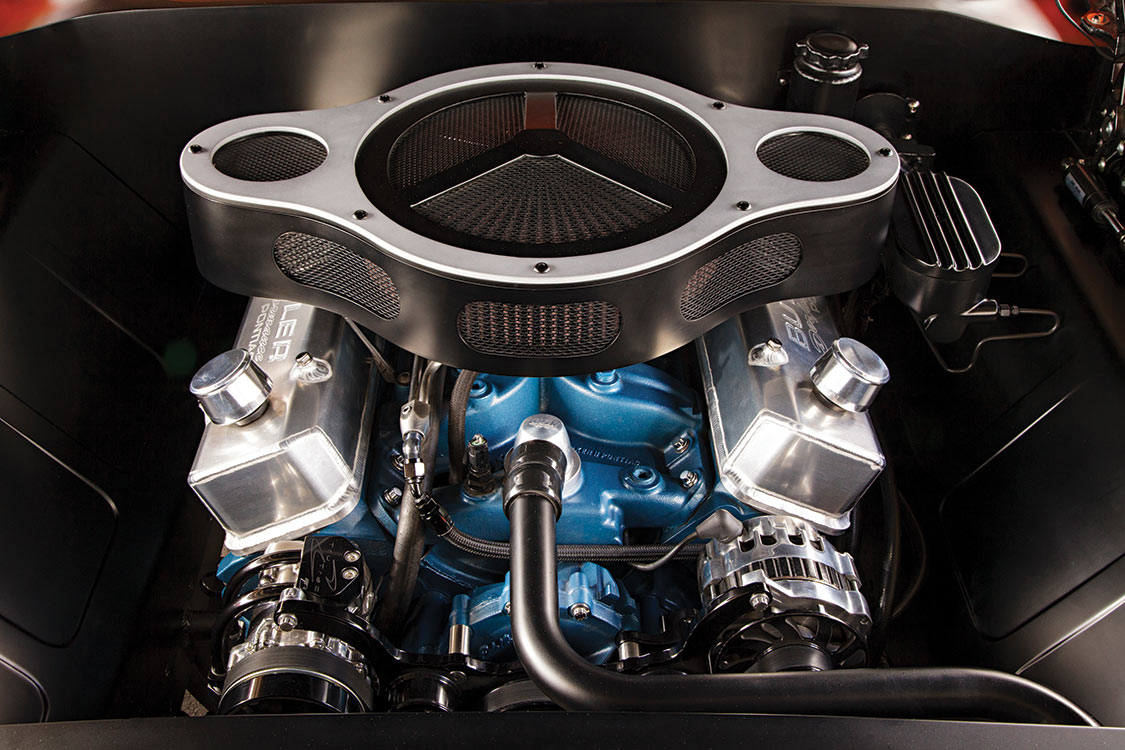
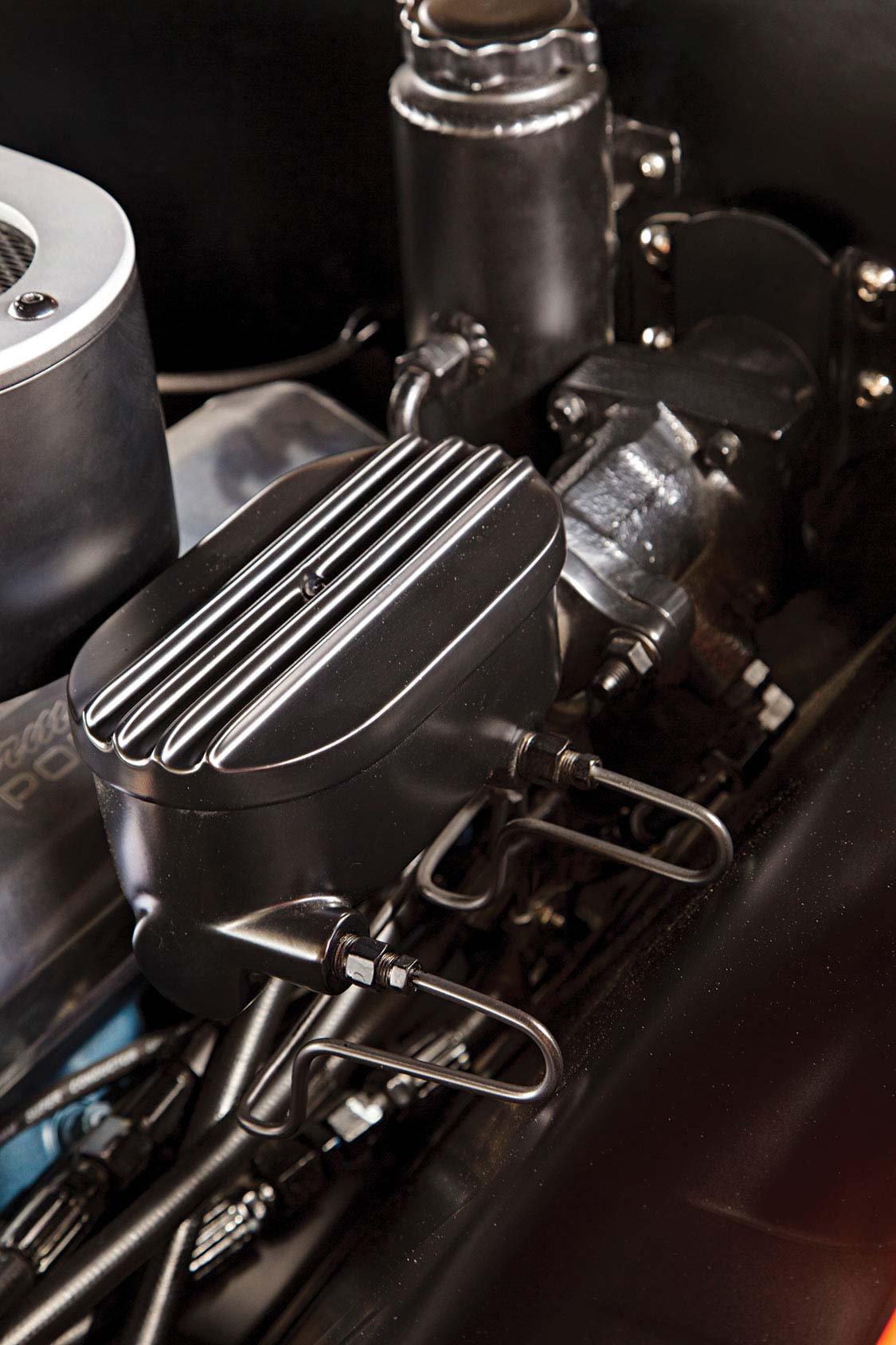
Share Link